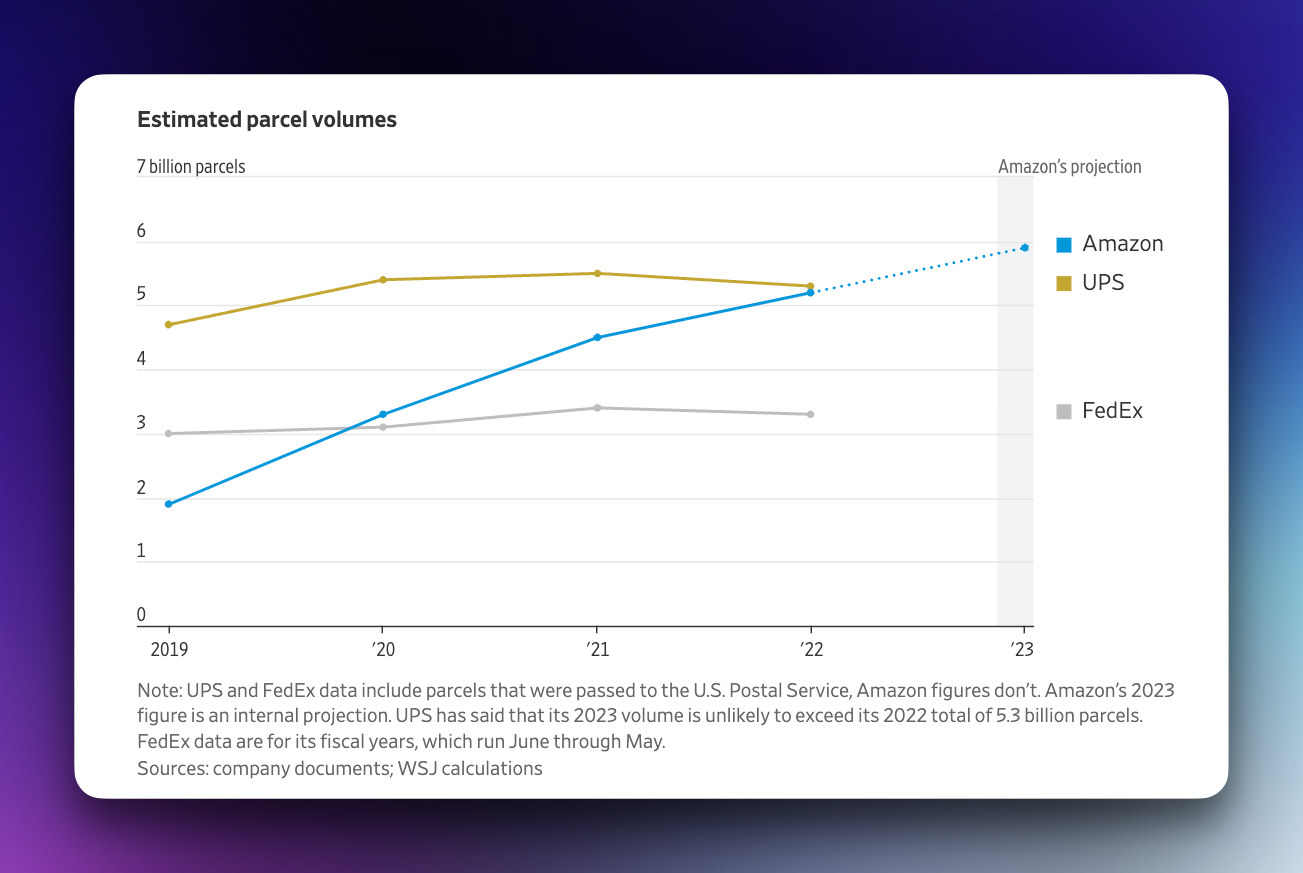Slow Then Fast
For more than a hundred years, freight cargo – industrial and commercial – has been dominated by a small number of gigantic firms. While USPS has a government-sponsored monopoly on mail and package delivery, UPS and FedEx have long reigned as the two largest private firms in the industry.
How big is big enough?
UPS and FedEx are massive. Both employ ~550,000+ workers, which makes them among the largest employers in the United States. UPS, founded in 1907, delivered 5.3 billion packages and generated around $100 billion in 2022. FedEx delivered 3.05 billion packages and generated around $90 billion in 2022.
Change is uncommon, by design, in markets with mega-incumbents. This is doubly true in markets with very high barriers to entry (like freight). The benefits of incumbency are so powerful that incumbents forget the very nature of competition. Just a few years back, FedEx's former CEO, Fred Smith, predicted market stasis – with his firm at the top – for the foreseeable future.
In all likelihood, the primary deliverers of e-commerce shipments for the foreseeable future will be UPS, the U.S. Postal Service and FedEx.
Most data – historical changes, market share trends, and the size and power of the incumbents – would have reinforced Smith's confidence. The third largest freight provider, Amazon, wasn't a shipping company after all. It was focused on commerce. Sure, its shipping capabilities grew slowly, but those marginal investments were primarily seen as an effort to augment, not replace, the incumbent giants.
And so, just like the Bush and Obama eras, the slow and steady shipping market changed very little through the first years of Trump's presidency.
Never let a good crisis go to waste
Then, in March 2020, everything changed. The world economy suffered a once-in-a-generation shock, global supply chains were severed, and American demand was forced online en masse. Covid broke most market models, including the trillion-dollar status quo in shipping.
So while most firms pared back their spending and investments, Amazon went into overdrive: in the first 18 months of the Covid pandemic, Amazon opened hundreds of logistics facilities – doubled in size – to enable its package delivery operations.
Amazon's investment has already generated substantial returns: when both deliveries have plateaued for UPS and FedEx, Amazon's package deliveries will have grown 300% between 2019 and 2023. Much to the horror of the fatcat incumbent class, Amazon will, for the first time, surpass both in package volume, the WSJ reports.

Relearning forgotten lessons
Whether in economics or politics, technology or sports, all meaningful change happens slowly over a long period and then happens fast all at once.





